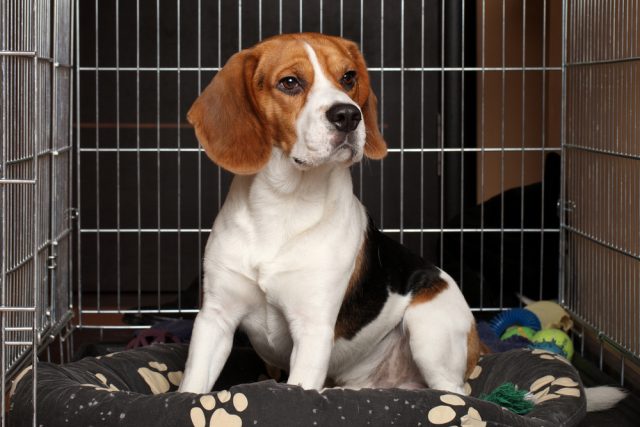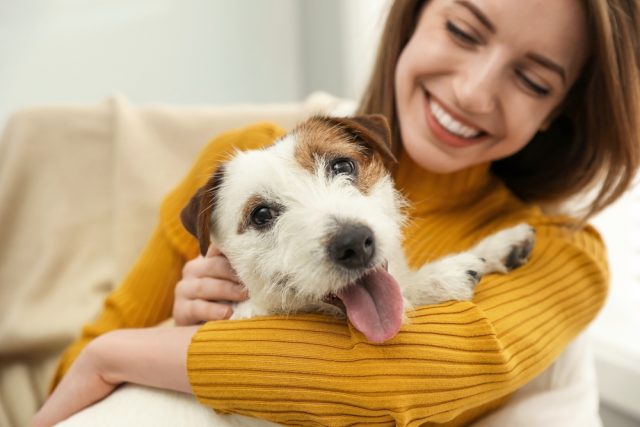One of the first things trainers ask new dog owners (whether it’s a puppy or a rescued adult) is if the dog is crate trained. If the answer is no, it’s usually one of the first behaviors taught.
It can also be one of the most boring, tedious and frustrating lessons for both dog and owner.
Why it’s Important
There are myriad reasons why crate training is important – here are a few:
- Makes housebreaking easy
- Teaches your dog to be calm and relaxed in a crate for vet/grooming appointments, travel, dog events, or when people come over and you need to confine your dog
- Teaches self-control
- Teaches your dog to relax, regardless of what is going on around them
The hardest thing about it, however, is getting the dog used to the crate.
Related: The 9 Best Dog Crates
Crate Training Mistakes
The first big mistake owners do is to just push their dog in the crate, shut the door and walk away.
Dog finds the crate scary and uninviting.
Then owners start using it as a place to put the dog when he has done something wrong.
Dog learns the crate means punishment.
Then, even worse, the dog starts to fuss (bark, cry, or tear the crate to pieces) and the owner lets him out.
Dog has just learned that screaming in the crate gets him out.
Don’t give up!
Even if you did all of these things, don’t give up – there’s hope! Your dog can still learn to like his crate, it just might take longer than a dog that has a clean slate.
 Make it Fun
Make it Fun
Be creative. The more fun you have with the crate, the more your dog will love it.
For example, all of my dogs know to go and run into their crates, lie down and wait to get their dinners. This makes crate training fun for them and mealtime easier for me.
Another fun way to teach crate training is to get a group of your friends together and practice with your dogs at the same time. Maybe the owner whose dog gets to the crate the fastest, lays down and stays wins a coffee. It doesn’t have to be anything big, but it will help motivate you to still with the training and your dog will have fun running around with the other dogs.
Dogs love tricks – teaching them to see their crate as a fun tool that is the “gateway” to treats and other fun things (like car rides or agility runs) will make it more fun for your dog and more interesting for you.
Related: 7 Best Soft Dog Crates
Crate Training Tips
Part of making crate training fun for your dog is to make sure you avoid doing anything will give the crate a negative association. Jeffrey Soto is a professional dog trainer for Fit Dog Sports Club and has these tips for people looking to crate train their dog:
- [At first], leave the door open and let them explore. Don’t place your dog in the crate and lock the door. You don’t want them to feel trapped.
- At night, put a blanket over the crate to make it comfy and close the door but leave it unlocked. So if they want to push it open they can, but it might be so comfy that they prefer to be inside.
- You want your dog to have a positive association with the crate, so never use it for punishment or time outs.
- Always put a treat in the crate before your dog goes in and before bedtime too.
- Dogs should not be left in crates for more than 6 hours during the day. Preferably, your dog has other options like an outdoor area, perimeter fence, or daycare.

By following the tips and techniques outlined in this article, you can turn crate training into an enjoyable and positive bonding experience. Remember to be patient, use positive reinforcement, and make the crate a cozy and inviting space. With time and consistency, your pet will come to see their crate as a safe haven, and you’ll both reap the rewards.


